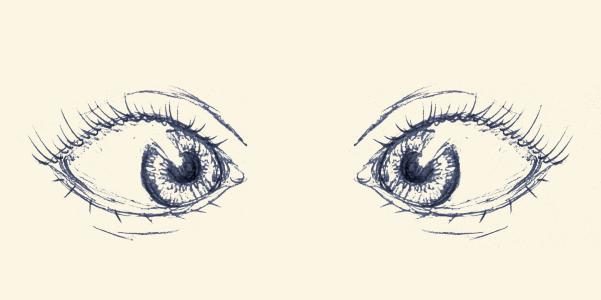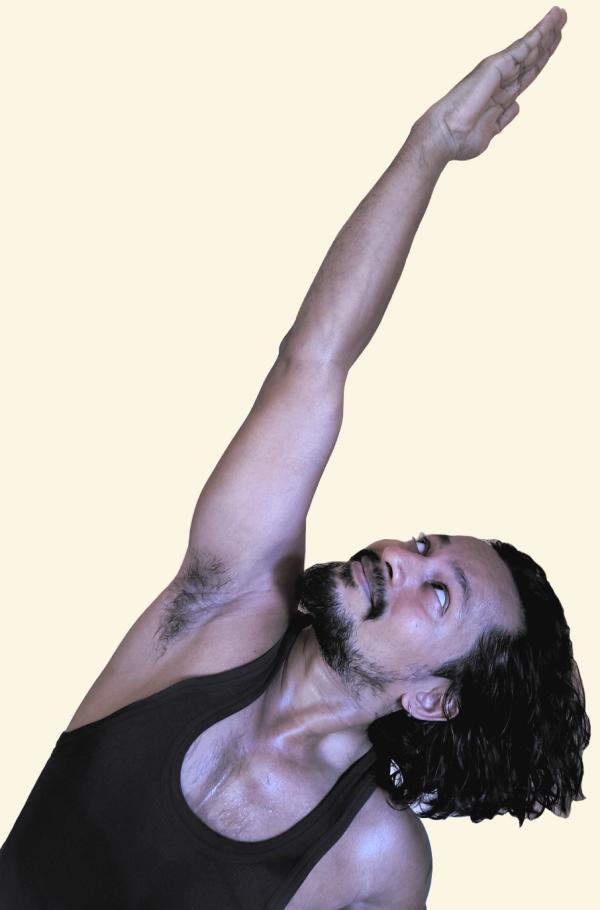Drishti means gaze or focal point. It is the practice of intentionally keeping your eyes on a specific point, to help focus and calm the mind. It is part of the larger practice of Pratyahara (sense withdrawal), the fifth limb of yoga. It is a highly effective practice for increasing concentration and bringing the mind to a meditative state. It is also often overlooked and seen as unnecessary so it is rarely done by practitioners. Include Drishti to get more of the psychological benefits of yoga within your physical practice, and use it as a method to take your practice to a higher spiritual level. In this article, we discuss the reasons why we think this is such an important practice nowadays, what the benefits are, and how to include Drishti during asana practice.

The eyes are incredibly easily distracted, and the more technology advances the more visual distractions there are in our daily lives. Advertisers and tech companies hack into our dopamine addiction to hook and trap us into consuming more and more content. Abstinence might work short-term, but as soon as the distractions come back so will the problems, so the best method is to develop the skill to be able to cope with and manage the mind during these distractions. This way you will be able to use the amazing benefits technology brings without becoming imprisoned by it. Drishti is one of the simplest skills you can learn to train yourself to focus and concentrate, and best of all it doesn’t require any additional time outside of your usual practice.
How does it work? Notice how the eyes move as we think, even while sleeping or dreaming because the mind is still active. By intentionally keeping the eyes still, the thoughts slow down and become less intrusive. The point you focus on can be either internal or external, but forcing the eyes to become still is the key. Regularly practicing this type of focused attention will also increase the concentration power in your day-to-day life. It will help you to focus on the work that you need to do with fewer random distractions. It also becomes easier to focus on and understand emotions and helps to be able to watch the thoughts without getting entangled in them. This can be done any time throughout the day and can be used during asana practice.
So how can you practice Drishti? Simply choose something and focus your eyes on it, and don’t let your eyes move away from that point. In the Asana practice, this is usually somewhere on the body but could be somewhere else too. For a beginner, you can choose focal points that also help their alignment like the navel, the thumb, hand, left, right, upwards, etc. As you get more advanced you can bring in the tip of the nose and between the eyebrows. Keep the eye open and crossed, not allowing the eyes to focus outside of those two spots for your entire practice.

You can bring it one step further than this and actually close the eyes (it will make balance more difficult) and bring the Drishti inward. To the inner watcher or the third eye. There are a lot of different practices in Hatha Yoga that uses the concept of dristi like Trataka, Shambhavi mudra, etc, but generally, we don’t have time to practice all these practices so including this in Asana practice can make the whole practice become more meditative.
How to include Drishti in asana practice? Instead of looking in a mirror, or at a friend or a teacher or an instructional video, try bringing your gaze to specific points on the body. You can start this as soon as you have a basic sequence you can follow without looking elsewhere. Like this, the practice can become more of a movement meditation. To start with you may choose to look at the tip of your thumb, your navel, or your big toe (always letting the gaze help with the alignment of the pose). Eventually, the eyes will remain crossed and slightly out of focus, looking between the eyebrows as the head comes up, and at the tip of the nose any time the head comes down. This requires more discipline than simply closing the eyes, but you can do drishti with closed eyes as well. By introducing drishti to your asana practice move it beyond a physical stretching and strength practice and start to challenge your mind.
“The postures or sequence remain the same, we evolve new layers of discipline on top of that.”
Our practice evolves slowly, when you are new to ashtanga vinyasa yoga (or any asana practice) the attention will be required to remember the postures and sequence, and its name. Then the second level would be to work on proper breathing in the postures or their transitions. Once these things happen automatically because of lots of training then the mind can work on putting the attention on the bandhas, and the dristi to get even more benefits from the sequence. The sequence remains the same, we evolve.
Drishti for different body positions/asana:
- In postures where the back is arched and the neck is extended up, drishti will be either upwards or eyebrow center (Wheel pose, Bow pose)
- Twisting postures either looking at the thumb if the arm is extended out or just to the side (Revolved triangle pose, Universal Spinal twist).
- Forward bending either tip of the nose or the navel (Downward facing dog, Standing forward bend).
- When the arms are above the head, either the thumbs or the eyebrow center (Hasta utthanasana, Utkatasana)
Check out some more free resources on Ashtanga vinyasa yoga.